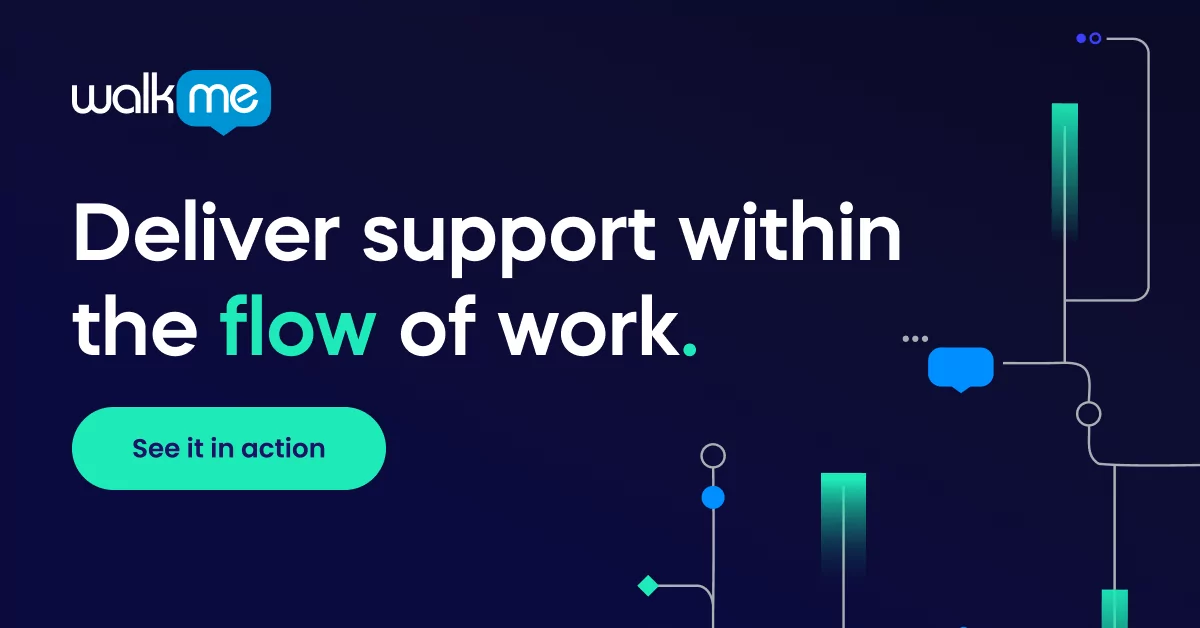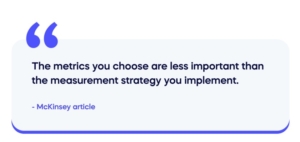Nowadays, everyone wants to improve customer experiences in whatever way they can. In this business landscape, the concept of ticket deflection is very useful. Ticket deflection is all about giving everyone the answers they need while conserving a company’s most valuable resources.
This article will explain how ticket deflection can improve overall customer satisfaction. We’ll start by defining ticket deflection and explaining the main benefits. Then, we’ll look at some important examples of ticket deflection. Before finishing, we’ll take a quick look at the risks of ticket deflection as a method of customer service.
Building a company around customer centricity is good news for everyone. But globally, customer service is on the decline. In the UK, for example, research from the Institute of Customer Service in 2022 shows year-on-year declines in overall customer satisfaction.
Ticket deflection could be the technique that makes a difference for your company. Let’s see how it can work out.
What is ticket deflection?
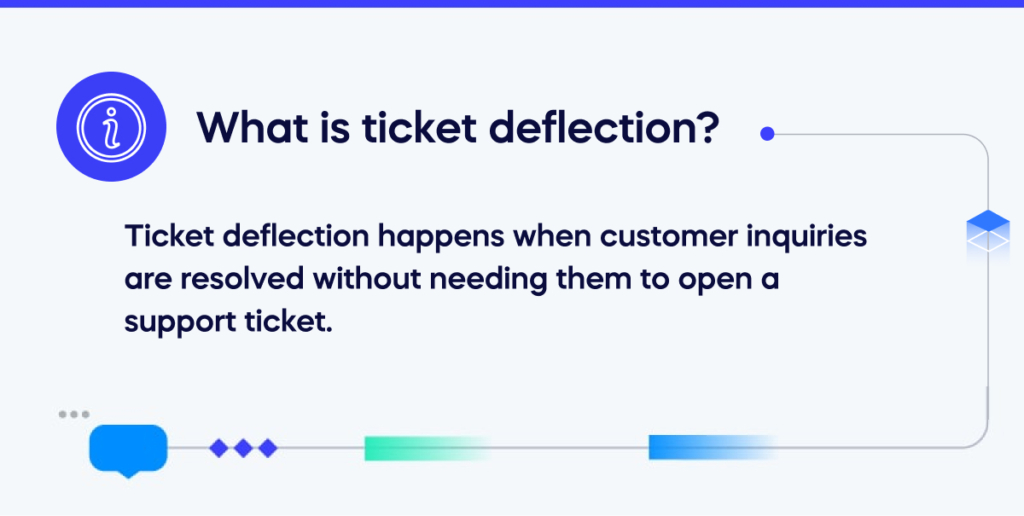
Ticket deflection happens when customer inquiries are resolved without needing them to open a support ticket.
Support tickets can be annoying. Once a support ticket is opened, the company must resolve problems using valuable staff time. If customers can solve their inquiries through other channels, the customer service team will be able to focus on the most challenging customer inquiries.
At its heart, ticket deflection aims to empower customers to find answers independently. In today’s connected world, vendors can take responsibility for their choices—FAQs, community forums, chatbots, or automated systems that provide relevant information and assistance to customers.
By deflecting tickets, organizations can streamline support processes, improve customer satisfaction, and allocate resources more efficiently.
How ticket deflection improves customer service
Ticket deflection can significantly improve customer service in several ways.
By providing customers with self-service resources, such as knowledge bases or FAQs, they can find answers to their questions or solutions to common issues without waiting for a support representative. This leads to faster resolution times and reduces customer frustration.
Self-service options for ticket deflection are typically available 24/7, allowing customers to seek assistance at any time that suits them. This improves customer convenience and reduces the need to wait for business hours to contact support.
Ticket deflection reduces the overall volume of support tickets, freeing customer service representatives to focus on more complex or urgent inquiries. This reduces wait times for customers who do need direct assistance, leading to improved satisfaction.
Ticket deflection empowers customers to find answers independently, fostering a sense of self-sufficiency. Customers feel freedom and gratification from their investments, leading to satisfaction and confidence in the company.
Customer service teams can allocate their resources more efficiently by deflecting a significant number of routine and repetitive tickets. This allows them to focus on more critical or specialized customer inquiries and provide more personalized support.
Overall, ticket deflection can result in cost savings for companies by reducing the number of support staff required to handle customer inquiries. With fewer tickets, companies can optimize their workforce and allocate resources to other areas of the business.
Ticket deflection in action: key examples
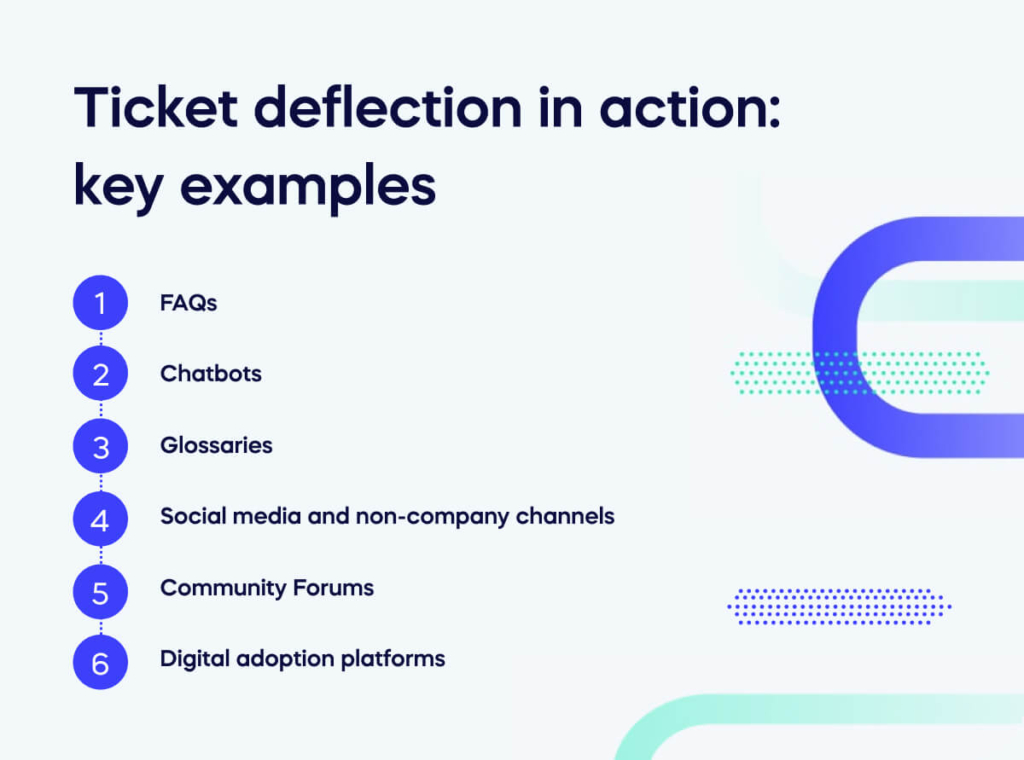
All things considered, it’s no wonder that customer service bosses want to deflect customer service tickets.
Every deflected ticket helps the team to work better. And every time non-ticket customer support is a success, customers feel valued like never before.
So what can you do to improve your rate of successful ticket deflection? Here we will look at a few key examples: FAQs, Chatbots, glossaries, social media, and community forums.
If you get these right, you can deflect tickets left, right, and center.
FAQs
Let’s start simple: a good old-fashioned FAQ.
FAQs provide a readily accessible resource for customers to find answers to common questions. By compiling a comprehensive list of frequently asked questions and their answers, customers can quickly self-serve and find solutions without contacting support. This reduces the volume of incoming tickets, speeds up query resolution, and empowers customers with the information they need.
Chatbots
Chatbots improve ticket deflection in customer service by providing instant assistance, self-service capabilities, and intelligent routing. They offer 24/7 availability, personalized solutions, and proactive engagement, empowering customers to find answers and resolve issues independently. Chatbots reduce the overall ticket volume, streamline support processes, and enhance customer satisfaction by effectively addressing common queries and triaging tickets.
Glossaries
A glossary gives customers a centralized repository of common terms and their definitions. It offers a single reference point for the industry-specific or technical terms that customers might encounter in support documentation or knowledge bases.
When customers encounter unfamiliar terms while seeking help, they can refer to the glossary for quick clarification, reducing the need to open a support ticket solely to inquire about definitions.
Social media and non-company channels
A 2022 Gartner overview predicts that by 2025, 60% of customers will seek answers through third-party sources. In their view, companies should be ready for “expanded paths to resolution – Reddit, YouTube, Twitter, even TikTok. As such, customer service should actively offer useful and accurate content in those channels.
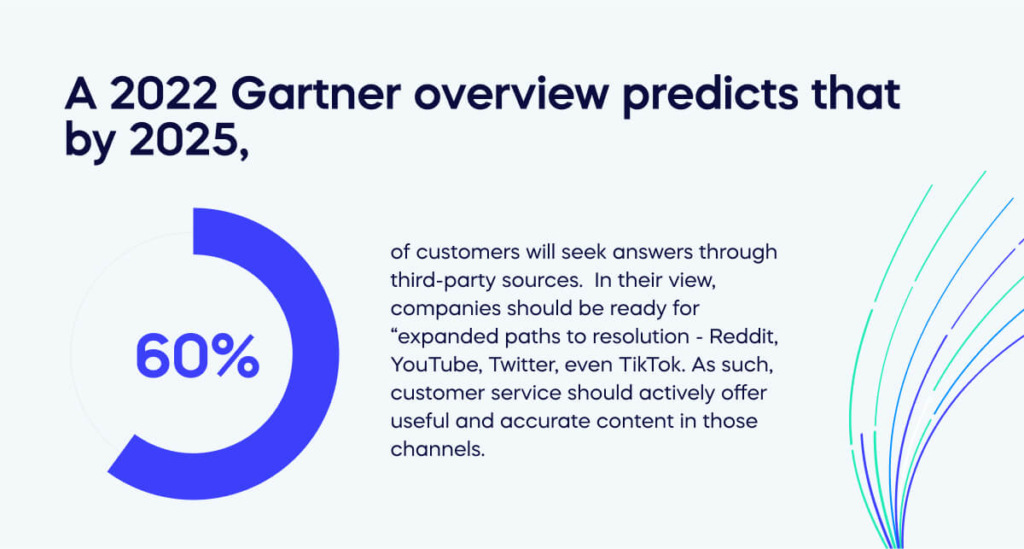
Community Forums
Community forums help customers to engage with each other and share knowledge. Customers can ask questions, provide answers, and share experiences, creating a collaborative environment. By leveraging the community’s collective wisdom, customers can often find solutions to their queries without opening support tickets.
Digital adoption platforms
Digital adoption platforms (abbreviated to DAPs) are a great method of ticket deflection for software support requests within a company. Among the many services that DAPs offer, they can give users walk-throughs and in-app guidance. Such clear advice can resolve most queries without raising a ticket.
The risks of ticket deflection
Let’s just take a moment to pause. Ticket deflection is a logical move for customer service. Surely it’s always good – right?
Ticket deflection is good when it works. But your strategies need to be effective.
If…
- Your knowledge base is incomplete
- Your chatbots don’t work
- User forums are filled with outdated and irrelevant knowledge
- It’s impossible to talk to a human
Your customers will get frustrated. If they work too hard to get help, they will just take their business elsewhere.
How to measure ticket deflection
Measuring customer experience is a complex area of business: and there’s no single KPI to measure ticket deflection. However, you can choose some key metrics proving the value of ticket deflection strategies.
For a knowledge base, you can use similar metrics to SEO projects. That might include unique users, bounce and rate, and session duration. You can tell which pages customers go to the most – and ensure your content is comprehensive.
For chatbots, you might use a task completion rate. At the end of a conversation, you can ask customers if they got the needed answers. Additionally, you can find out how many chatbot conversations are escalated to a member of the customer service teams.
Overall, user satisfaction outcomes are not a new metric. Gather baseline scores before you make interventions, and continue to monitor them as you go.
As a key McKinsey article explains, your overall approach is the most important thing: “The metrics you choose are less important than the measurement strategy you implement.” Whatever you choose to measure, ensure it fits into your business plans.
Ticket Deflection in 2023 & onwards
This article has presented a short introduction to ticket deflection. We could say a lot more about ticket deflection: whether that’s about implementation, training, design, or more. But if all you’ve learned from this article is the meaning of ticket deflection, we’ve done our job!
So let’s have a quick recap of the main points.
- When customers resolve their problems without raising a support ticket, the company uses ticket deflection effectively.
- There are many benefits to ticket deflection: including faster resolution times for all customers, 24/7 availability, shorter wait times, and optimized resource allocation.
- You can use common ticket-deflection initiatives such as FAQs, community forums, social media, and chatbots to see these results.
- These methods can be very effective. But here’s a little warning. If ticket deflection techniques are used badly, customers will become frustrated with your company.
Ticket deflection won’t be for everyone. But if it suits your business, don’t be left behind. It’s not difficult to implement ticket deflection approaches, so start today!
